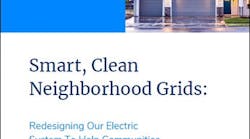A global electricity trend towards clean, resilient and renewable distributed power is underway. This trend is driven by the increased threat of climate change, increasingly old and costly utility infrastructure, and the advent of new software and hardware that enable an affordable, distributed energy future. As customers adopt energy saving and management solutions like rooftop solar and battery storage, this theoretical future is already coming to fruition. Yet in order to harness the full suite of benefits to individuals and society, we need advancements in power system planning, equipment and technologies, and operations.
Distributed, clean energy is an optimal solution to the growing challenges of transitioning towards a 100% renewable energy grid. As utilities look to harden existing centralized infrastructure and improve resilience by relying on outdated and polluting technology, our proposed concept demonstrates how clean, distributed energy resources can achieve a smarter, more resilient electricity system.
In one instance, California-based utility Pacific Gas & Electric has proposed reinforcing its 1 substations with what amounts to utility-scale fossil fuel generators to mitigate the impact of Public Safety Power Shutoffs (PSPS). This paper shows that we can work together with the utility to deploy distributed energy resources (DERs), both at the distribution substation and along the neighborhood distribution network, to combat the challenges of an increasingly vulnerable grid and deliver a clean, resilient, solution.
We must coordinate resources to realize this vision. While the fundamental building blocks are already in place, it will require further research and technological advancements to become reality. We will also need to see a rapid increase in the adoption of distributed energy resources. Forward-looking policy that prioritizes consumers and community-based solutions will be critical to achieving this goal and advancing the necessary redesign of our electricity infrastructure.
